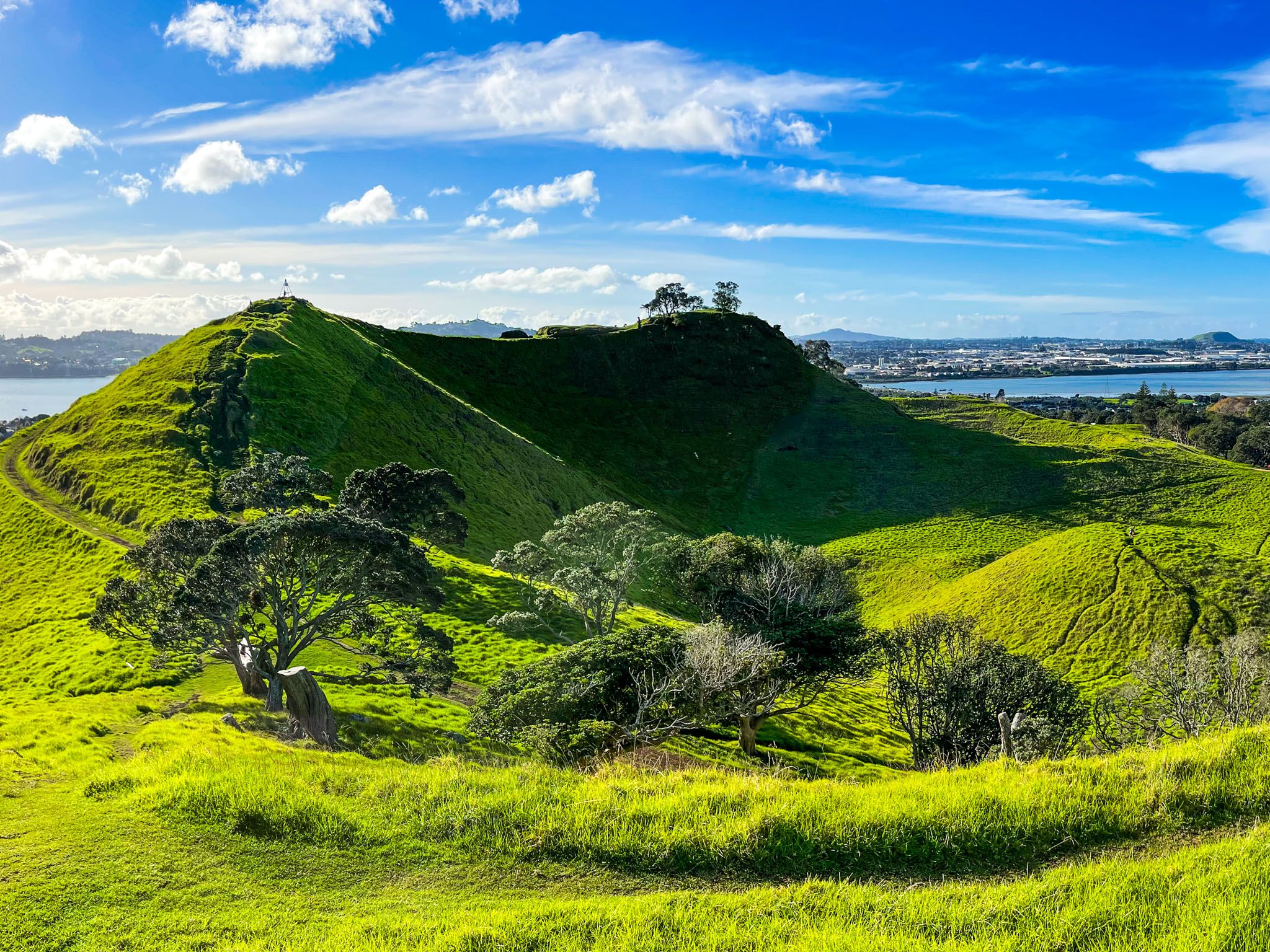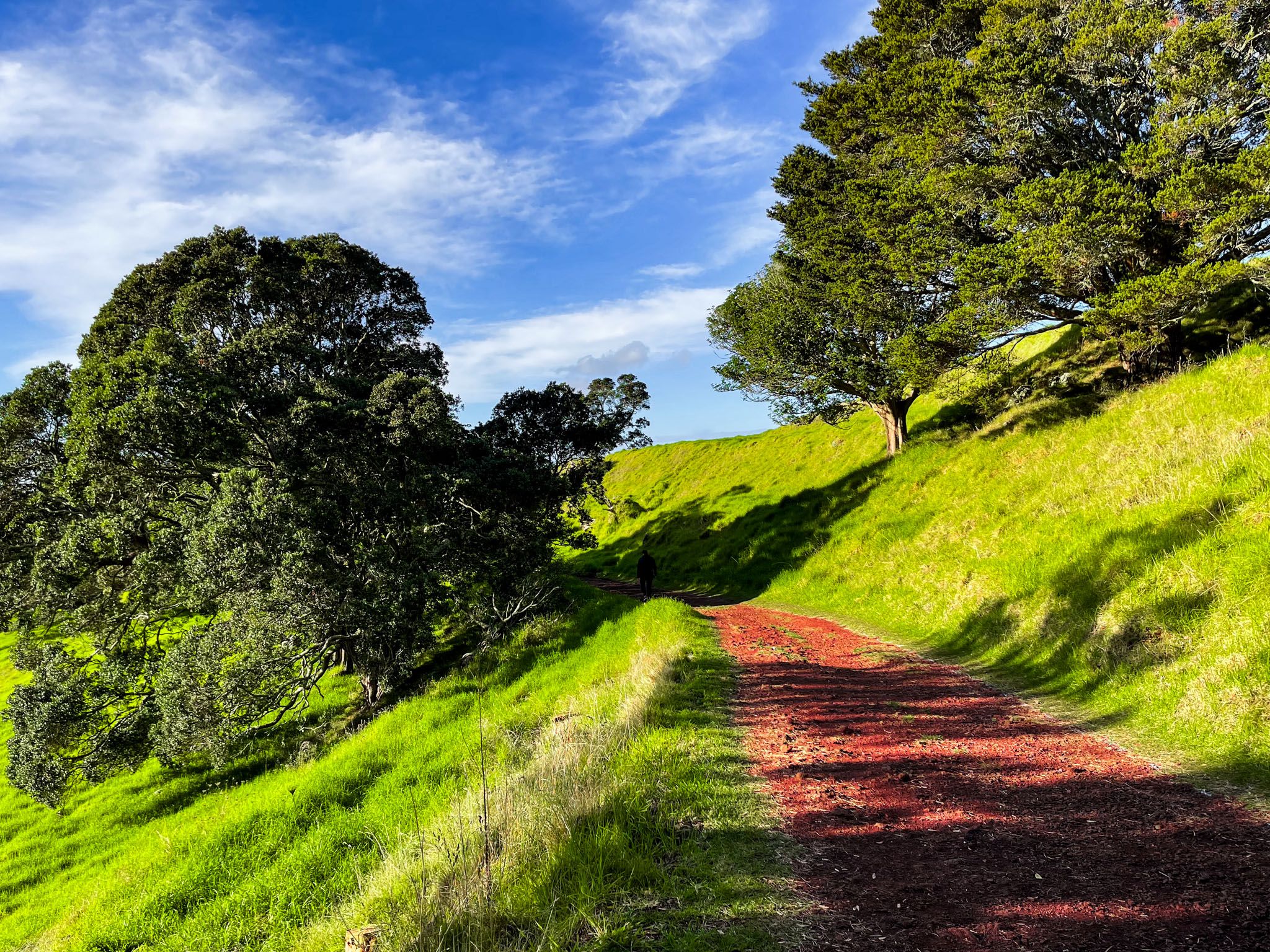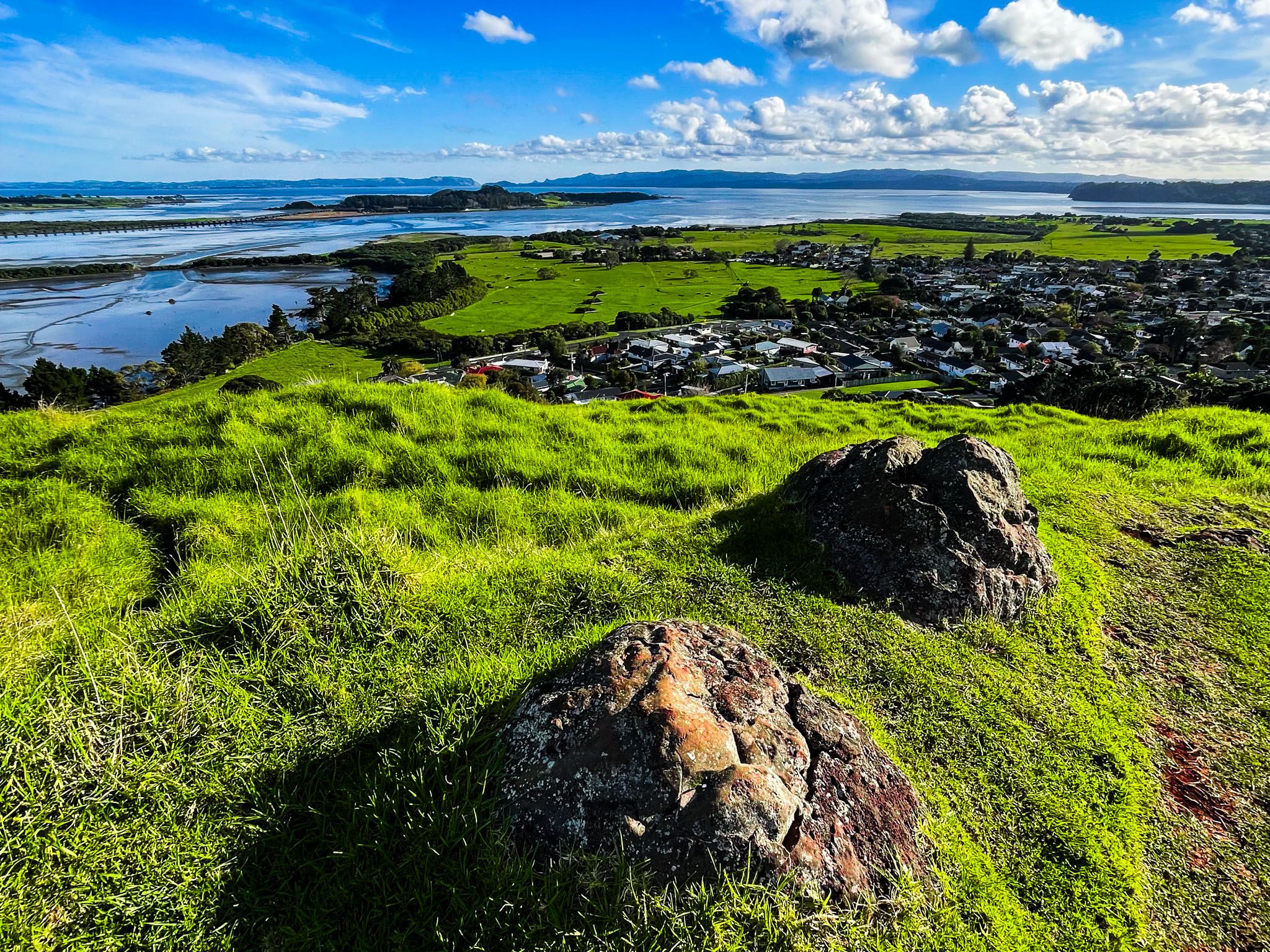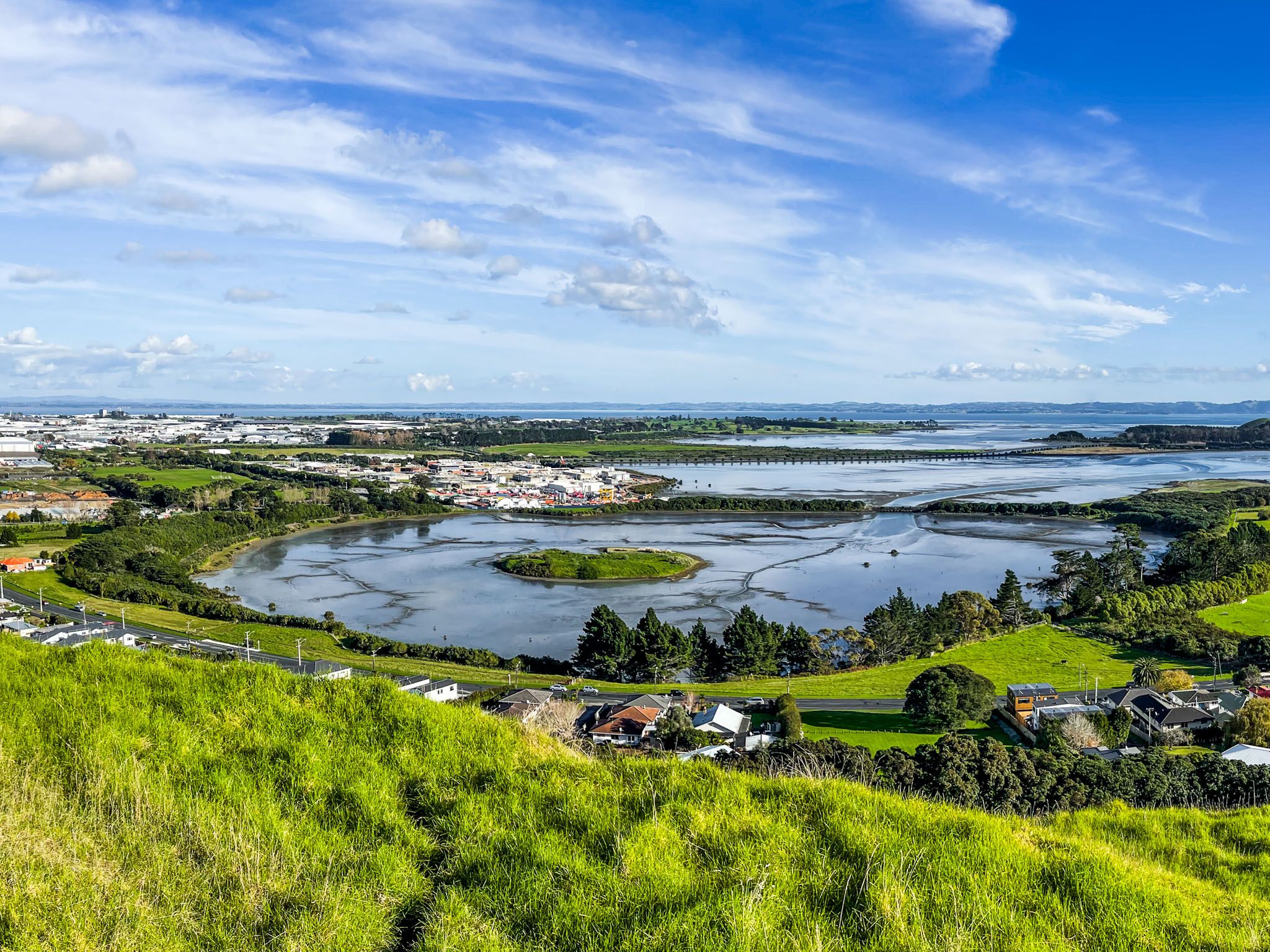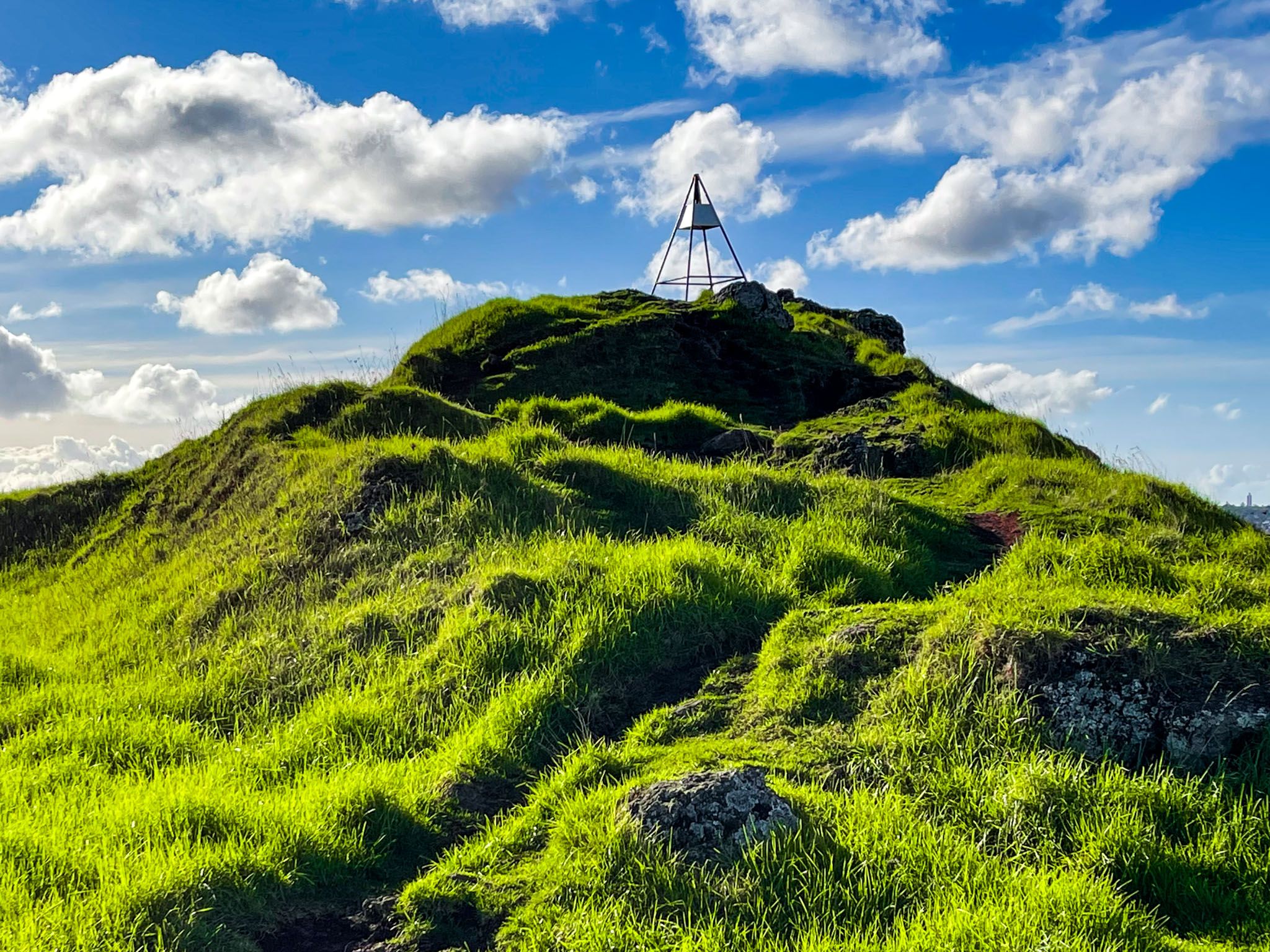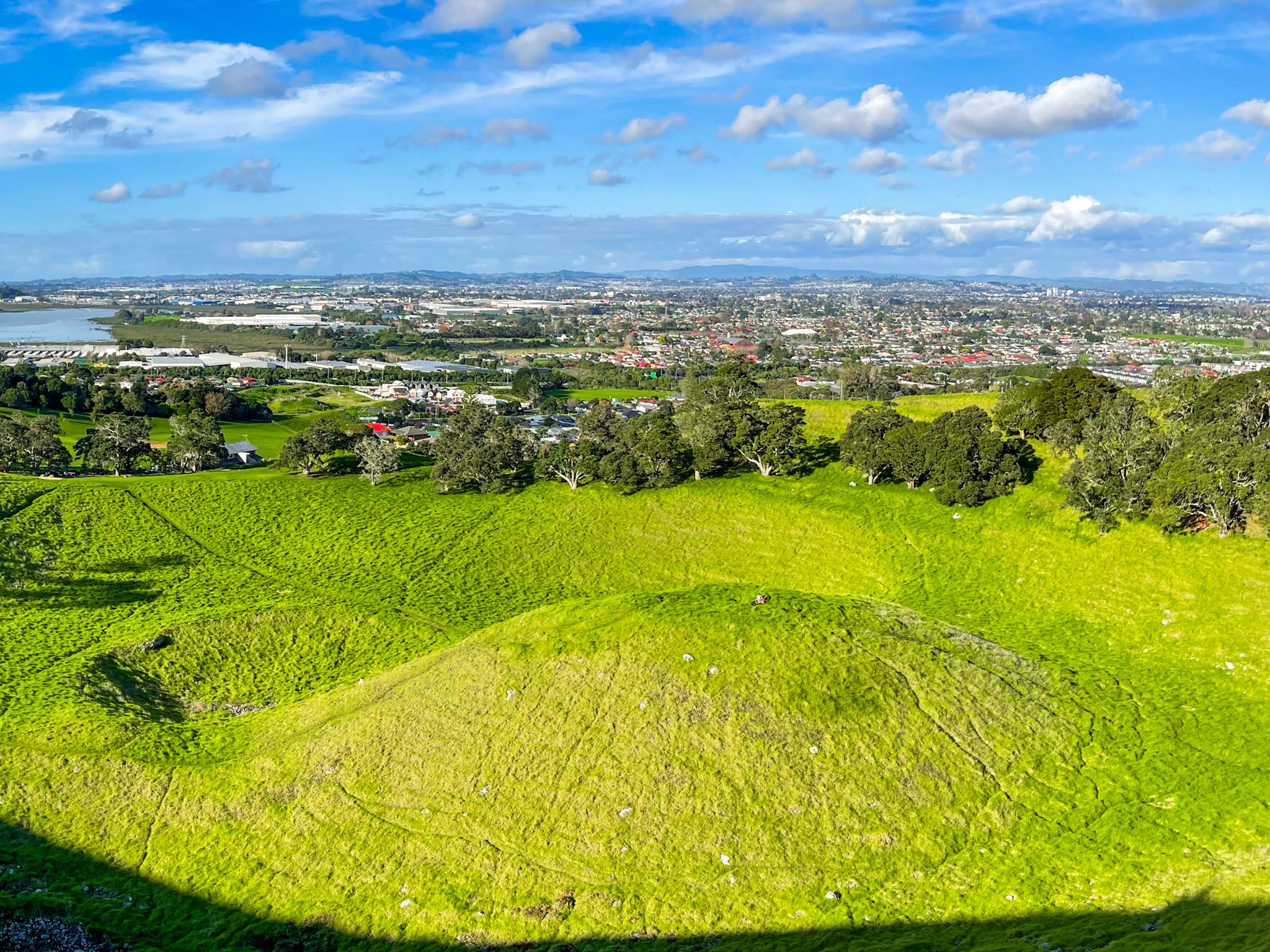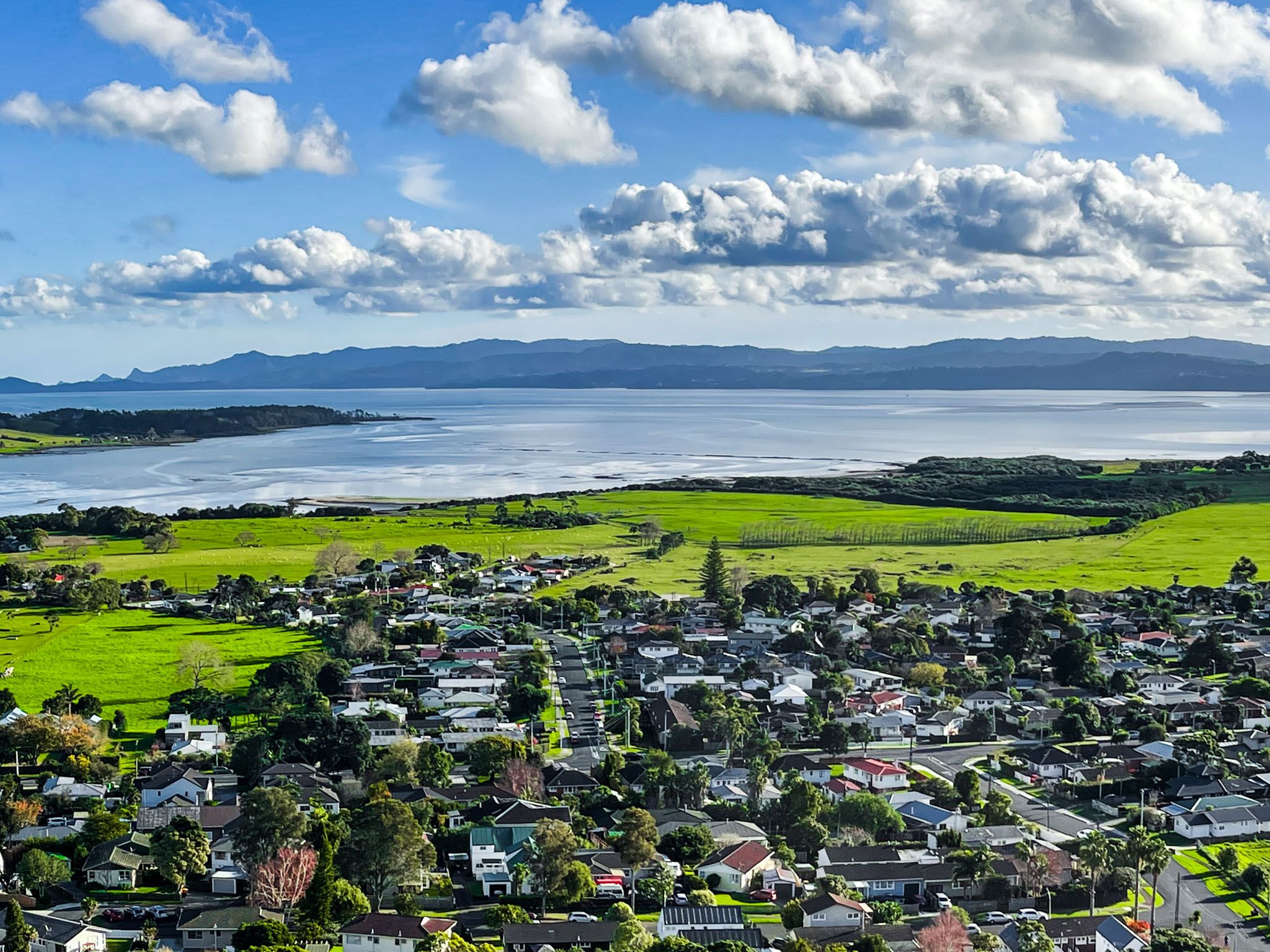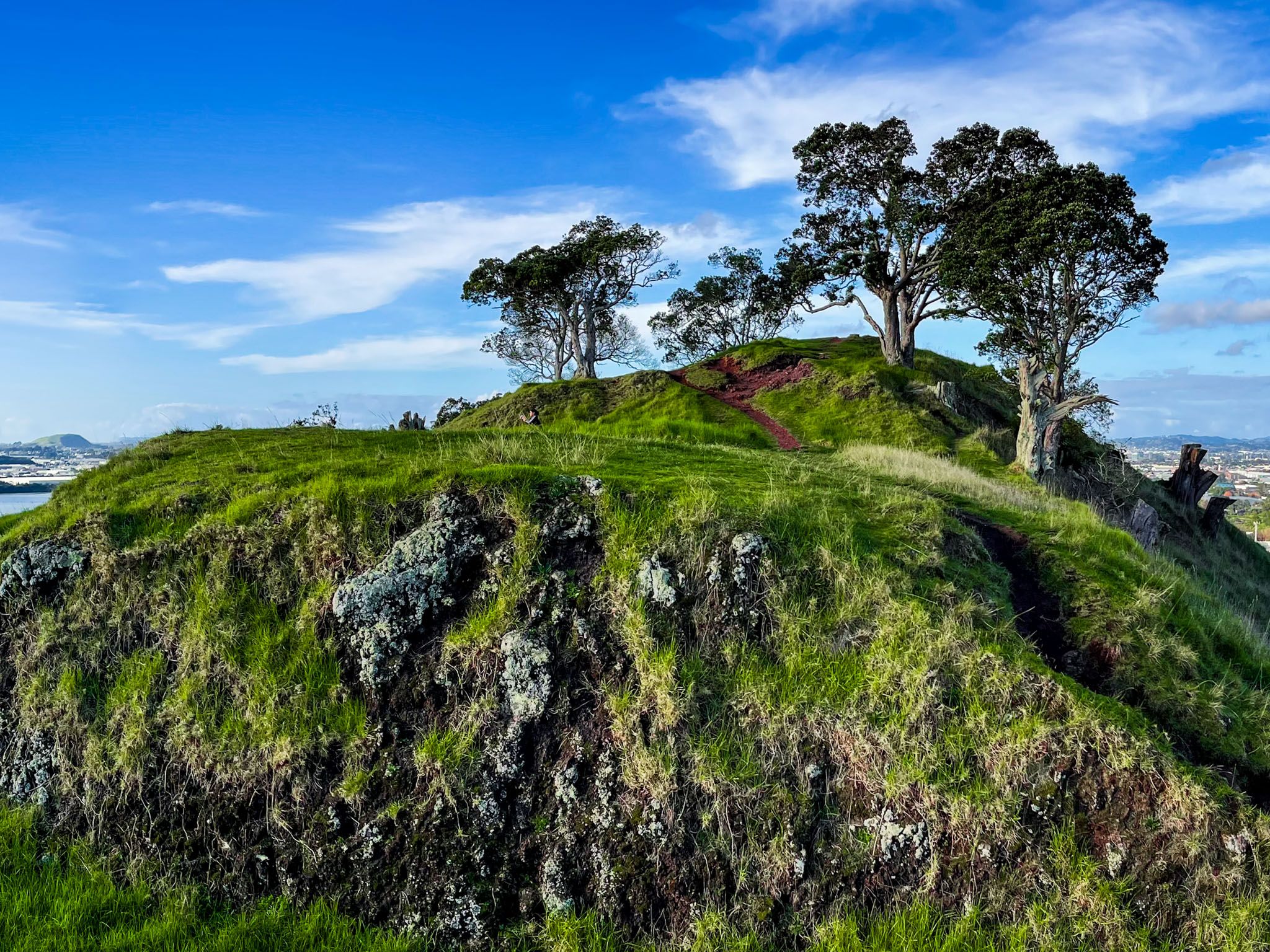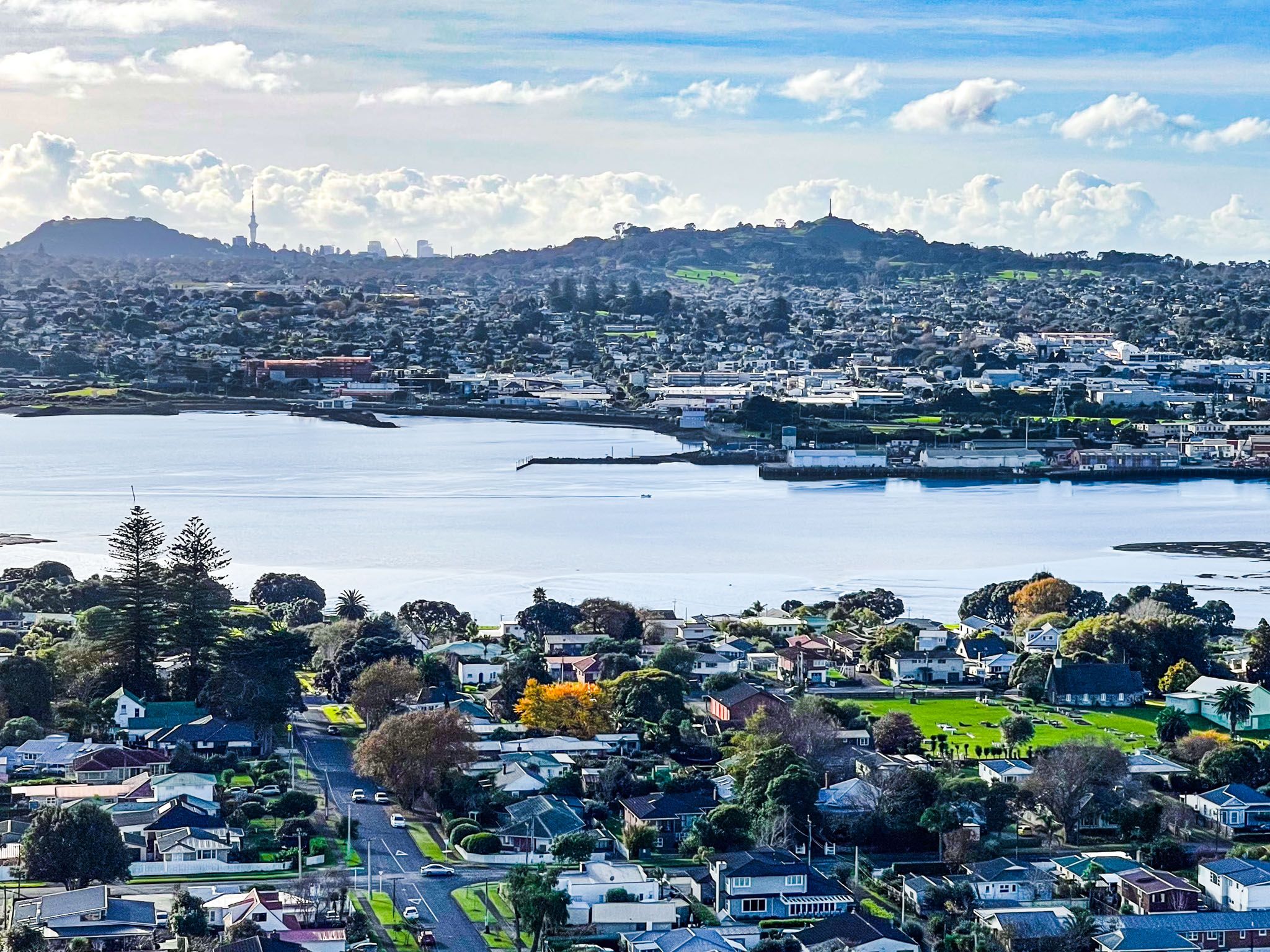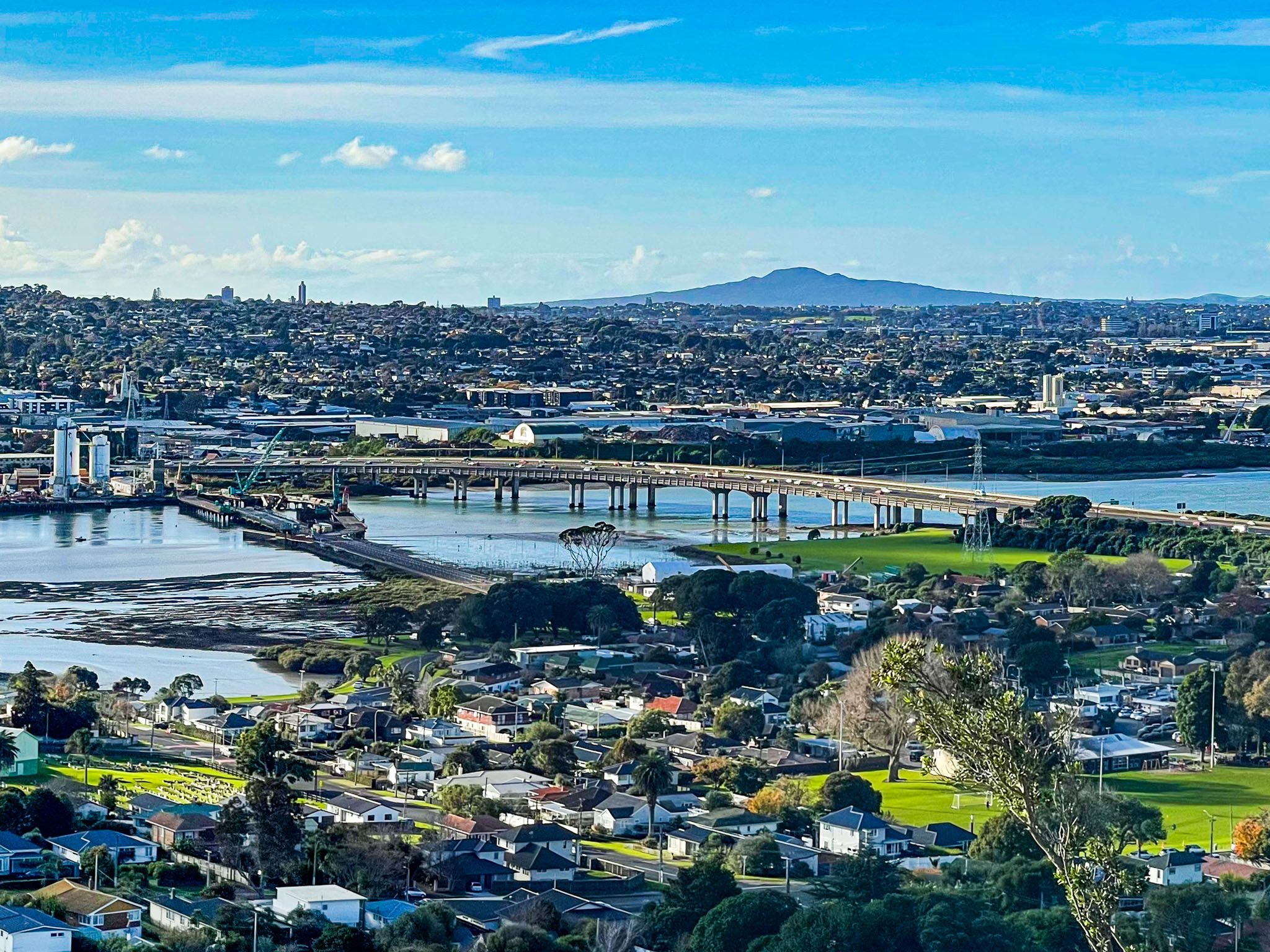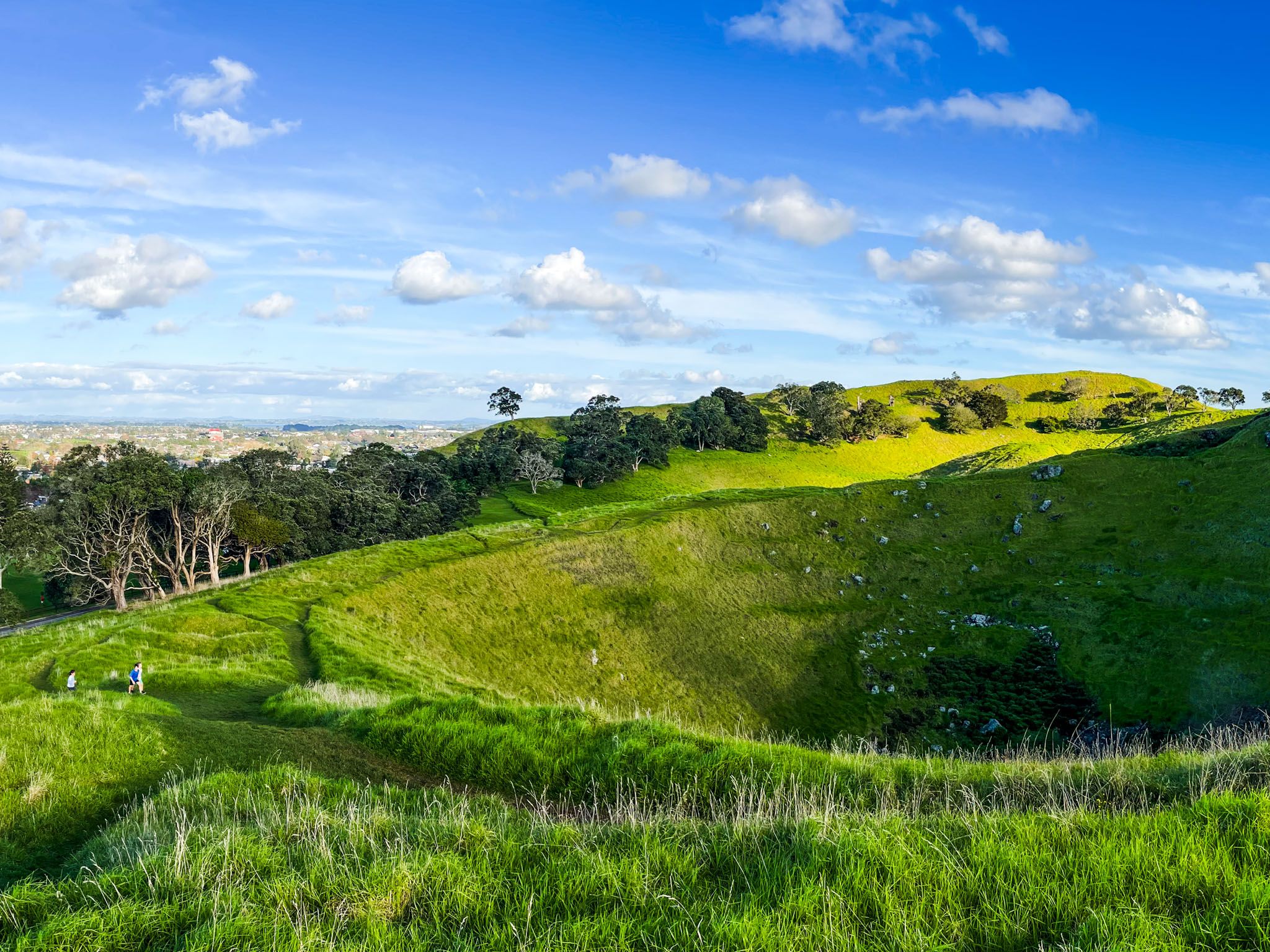Māngere Mountain, also known as Te Pane-o-Mataaho and Te Ara Pueru, rises above the suburb of Māngere Bridge in South Auckland. If you are new to Auckland and arrive by plane, the grassed maunga is a dominant feature on the west side of the motorway as you head towards Downtown. It’s one of the best-preserved volcanic cones in the Tāmaki Makaurau volcanic field, with a height of 106 metres and a long history and cultural heritage. A walk around the crater perimeter provides expansive views of South Auckland and the Manukau Harbour.
Formed by an eruption around 50,000 years ago, Māngere Mountain features a large main crater, a smaller secondary crater, and an unusual central lava dome called a tholoid – a 12-metre basalt plug pushed up from the earth during the eruption. The volcano’s lava flowed across 500 hectares, shaping much of what is now Māngere Bridge and forming parts of the Manukau Harbour coastline. You can see remnants of these flows along the Kiwi Esplanade shoreline. Immediately to the southwest, Māngere Lagoon at sea level is a separate crater that dates back 60,000 years.
The multiple Māori names each have distinctive meanings. Māngere means idle breezes and is derived from hau māngere and refers to shelter from the wind provided by Māngere Mountain. Taikehu, a Tainui iwi rangatira, provided this name. Te Pane-o-Mataaho refers to the volcano deity Mataaho, protector of secrets hidden in the earth, and Te Ara Pueru means the dogskin cloak path. The latter relates to a specific incident where Ngāti Whātua warriors used dogskin cloaks to cover pipi shells spread around the base of the maunga to warn of attacks, thereby permitting a surprise attack at dawn.
The area was occupied as early as the 1300s, and by the 1400s, its fertile slopes were kūmara gardens known as Taotaoroa. In the 1700s, the maunga was a major pā site for Te Waiohua. The slopes had been terraced, and hundreds of food storage pits can still be seen today as you walk the crater rim. The pā was overrun in the mid-1700s, along with the rest of the region, by Ngāti Whātua iwi.
Ngāti Whātua settled the area and were displaced in the 1820s by Ngāpui invasion during the Musket Wars. As the wars ended, people who had taken refuge in Taiinui territory in the Waikato returned, establishing the pā of Whakarongo. A daughter of Ngāpuhi rangatira Rewa married Kati Takiwaru, the younger brother of Tainui rangatira Pōtatau Te Wherowhero, cementing the peace. In the late 1840s, Governor George Grey invited Te Wherowhero and his hapu to settle on 190 hectares around Māngere Mountain as part of a strategy to provide stability and a defensive perimeter for the new town of Auckland.
However, Te Wherowhero became the first Māori King as part of the Kingitanga movement, which was established in part to resist government pressure to sell land in the Waikato. Consequently, the hapu’s land was confiscated during the invasion of the Waikato in 1863. Some redress was achieved in 1890, and a cottage for the then King Tāwhiao was built nearby and is near the Māngere Mountain Education Centre on Coronation Road.
The mountain was designated a public reserve in 1890, but it didn’t escape the impacts of Auckland’s development. Quarrying removed parts of the northern and eastern slopes, including an entire ridge linked to Te Ara Pueru. These areas became bowling greens, tennis courts, and sports fields. In 1932, a water reservoir was also constructed on the summit.
The Māngere Mountain Education Centre was established in 1995, and in 2014, ownership of the maunga was returned to mana whenua through the Tūpuna Maunga Authority. This has led to significant restoration work, including upgraded paths, the planting of native species, and the removal of aged and dilapidated exotic pines. On the lower slopes, whānau ātea, a nature-based play and gathering area, has been developed, along with a kī-o-rahi field (a traditional Maori ball game akin to tag rugby), and a skink habitat.
You can visit Māngere Mountain on foot via Domain Road or Coronation Road in Māngere Bridge. It’s about a 25-minute drive from Auckland’s city centre, with public transport options also available. Allow about 45 minutes to walk the tracks around the crater ridge up to the tihi (peak) of the cone and back.
